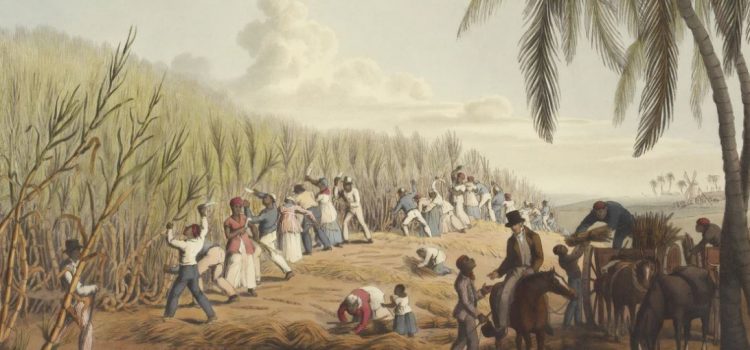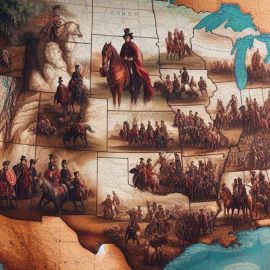

This article is an excerpt from the Shortform book guide to "The 1619 Project" by Nikole Hannah-Jones. Shortform has the world's best summaries and analyses of books you should be reading.
Like this article? Sign up for a free trial here .
How did slavery impact the development of America? What systems did the institution of slavery hit the most?
The history of slavery and segregation in America has shaped modern systematic injustices. Specifically, the institution of slavery can be directly linked to modern injustices in America’s taxation system, legal and justice systems, and healthcare systems.
Keep reading to learn about the consequences of slavery in modern America.
1. American Regressive Taxation
The authors explain that regressive taxation in America allows large wealthy corporations like Amazon and Netflix to avoid paying taxes and results in economic inequality and poor social initiatives like a lack of funding for public schools and healthcare. This taxation became prominent in the late 18th century because of Southern efforts to preserve slavery.
The Origin of Regressive Taxation
Regressive taxation became dominant in America because of the three-fifths compromise—a ploy by the South to preserve slavery. The compromise allowed Southern states to count three-fifths of their enslaved populations as “people” in the House of Representatives—this arbitrarily inflated their populations while denying citizenship and voting rights to enslaved people. Their high population counts then granted them political leverage over the North, allowing them to veto national policy and preserve slavery.
However, when the country started to implement taxation, the three-fifths compromise implied that Southern states would pay more taxes because of their higher populations. So to avoid a higher tax rate, Southerners pushed for imports to be taxed instead of people—meaning consumers would ultimately pay higher prices to cover the tax on the imports they purchased. This began the long-standing tradition of American taxation being hidden in consumerism and the wealthy being able to avoid paying their fair share—the root of American regressive taxation.
The Impacts of Regressive Taxation Today
The authors argue that regressive taxation is why America lacks funding for social initiatives and is riddled with economic inequality—the wealthiest people and corporations can avoid paying their fair share of taxes, so the bulk of public funds is pulled from the pockets of modest families and amounts to a relatively small sum compared to the total wealth in America (most of which remains in the pockets of the wealthiest 1%).
The authors continue to explain that progressive taxation and higher income tax for the wealthy would dissolve some of the maladies America faces. This would provide the nation with more funding to spend on public programs that would help low-income families gain opportunities and resources, ultimately minimizing economic inequality.
2. American Laws and Justice
The authors add that another impact of slavery on modern America is the enforcement of laws, which often favors white people and is unjust toward Black people. This is due to persisting attitudes and beliefs from slavery. This section will discuss a few American laws and practices that fail to provide liberty and justice for Black Americans.
Rape Laws
The authors explain that for Black women, laws regarding rape rarely result in justice due to stereotypes developed during slavery. A study conducted in Kansas City and Philadelphia found that prosecutors are 4.5 times more likely to file charges in rapes when the victims are white than Black. And, if the victim is Black, the accused are more likely to be acquitted or receive a light sentence if convicted.
The authors argue that these injustices are due to persisting stereotypes from slave times that make Black women and girls out to be hypersexual, or “Jezebels.” These stereotypes developed to justify and encourage the rape of Black women by their white enslavers—the belief claimed that Black women and little girls were promiscuous and always consenting, and therefore couldn’t be “raped.” The stereotype was publicly endorsed by newspapers so that American enslavers would produce more slaves—the children of these rapes became the property of their mothers’ rapists.
Self-Defense Laws
The authors argue that because of stereotypes and cultural mindsets that persist from slavery, the right to self-defense is leniently granted to white people while often being withheld from Black people.
When a Black person commits a violent act against a white person in defense of their life, they’re much more likely to be persecuted and denied their right to self-defense than if they were white. Similarly, white people have a much higher chance of being acquitted for a violent act against a Black person by claiming self-defense, whether or not the act was justified. The authors point to the case of Breonna Taylor to highlight this point, who was in bed when she was shot six times and killed by police officers during a raid on her Louisville, Kentucky home. The officers involved were acquitted because they were considered to be acting in self-defense.
The authors claim that the reason for these injustices is what they call white fear—the white cultural mindset that Black people are inherently dangerous and uncivil. This belief originated during and after slavery because whites feared that Black people would violently retaliate against the injustices inflicted upon them. Because of white fear, Blacks were intensely monitored and harshly punished through “slave codes.”
“Slave codes” were a set of rules that prevented Black people from gaining any power or equality. For example, these codes prevented Black people from testifying in court or carrying weapons but allowed enslavers to freely kill any of their slaves as they deemed necessary. When slavery was abolished, “Black Codes” were enforced in the south to patrol and monitor Blacks, mirroring the laws of slave codes. Soon after came Jim Crow—a set of laws that segregated Black people, enforced white supremacy, and established Blacks as second-class citizens.
So while Black Americans have been “free and equal” on paper since Jim Crow was abolished in 1964, the white fear that developed these forms of oppression remains ingrained into American culture and the justice system today.
Punishment Laws
The authors assert that in the justice system, Black individuals are punished more severely than white individuals who’ve committed the same offenses. The authors argue that these racist decisions stem from white fear and the legal and judicial precedents that remain from slavery.
For example, Black prisoners convicted of killings are more likely to be sentenced to death than whites facing the same conviction—a study from the 1980s found that in Georgia, Black prisoners were 22 times more likely to be sentenced to death.
3. Healthcare and Black Well-Being
The authors add that another consequence of slavery is the poor health and well-being of Black people. Black Americans are more prone to illness due to segregated living conditions, and they receive poor treatment in hospitals due to misinformation and racist beliefs that exist in the healthcare industry. These issues are all remnants of the eras of slavery and Jim Crow.
Racist Systems Make Black Americans More Prone to Illness
The authors explain that Black Americans are more prone to illness than white Americans because of segregated neighborhoods and poor living conditions that remain from Jim Crow and the early 20th century.
Segregation remains today because of intentional government policies developed during and after Jim Crow. Whites didn’t want to have Black neighbors, so elected officials, city planners, and mortgage bankers decided to force Black Americans into ghettos. Elected officials made sure that these segregated neighborhoods were the only places Blacks could afford and denied them mortgages elsewhere.
Further, planners targeted Black neighborhoods for highway construction, which caused overcrowding, pollution, and health issues for residents. Homes and buildings were destroyed to make room for highway construction—so while the populations in Black neighborhoods increased, the living spaces decreased. The combination of overcrowding, a lack of clean outdoor places (like parks), and poor air quality from passing traffic greatly increased residents’ risk of diseases, especially respiratory illness. So even today, Black Americans are at a higher risk of respiratory illness and are more likely to live in crowded, polluted neighborhoods.
Segregation also puts Blacks at higher risk for diseases like diabetes. The authors say that this is because healthy food is harder to find in Black neighborhoods while mini markets selling junk food are abundant. Stores that carry healthy food tend to be in white neighborhoods which can be inaccessible to Black people who don’t have personal transportation.
Mistreatment of Black Americans in the Healthcare Industry
In addition to racist systems making Black Americans more prone to illness, the authors claim that the American healthcare industry fails to provide adequate care and treatment to Blacks due to slavery-era beliefs—particularly that Black bodies are biologically and physiologically different than white bodies.
The authors explain that academic articles claimed that Black people have thicker skin, a higher pain tolerance, and different emotional and intellectual capabilities. In 2016, a study on medical students found that half of white participants believed at least one of these claims—the most common belief was that Black people felt less pain. The authors say that this belief would make the students less likely to prescribe appropriate treatment to Black patients.
Statistics show that these racist beliefs impact the treatment of Black people in the field—for example, Black Americans are 2.8 times more likely to die of Covid-19 than white Americans and are less likely to be treated for pain. The authors link these statistics to medical practitioners’ racist beliefs that can cause them to underestimate Black illness and not provide necessary treatments.

———End of Preview———
Like what you just read? Read the rest of the world's best book summary and analysis of Nikole Hannah-Jones's "The 1619 Project" at Shortform .
Here's what you'll find in our full The 1619 Project summary :
- A reframing of American history with the institution of slavery at its core
- How democracy as we know it today was largely built by enslaved Blacks
- The racist institutions that persist today that originated from slavery






